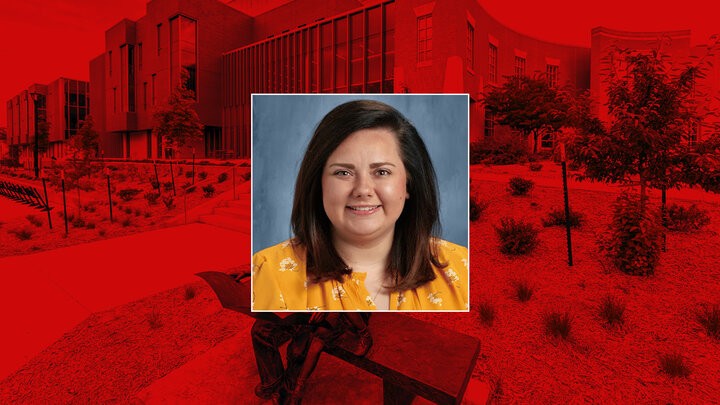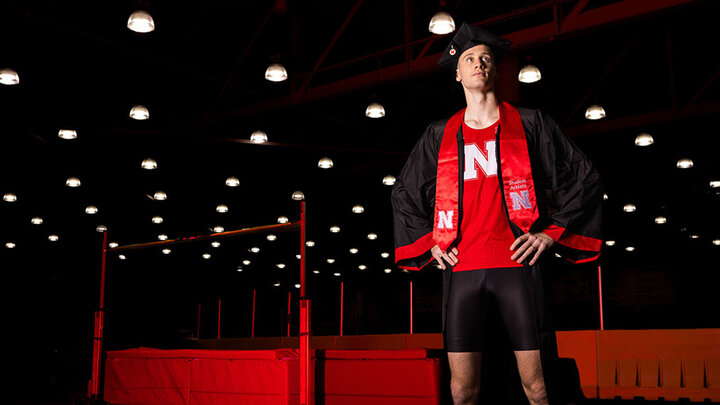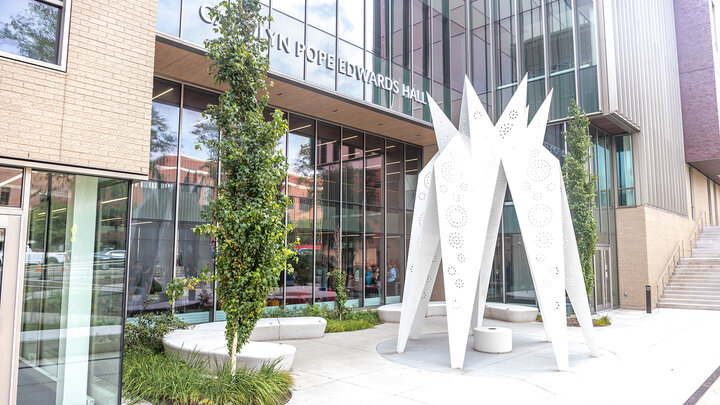As a special education teacher at Central Elementary in McCook, Nebraska, CEHS alum Marisa Hoins (‘17, ‘19) credits her experiences in the Kit and Dick Schmoker Reading Center, and the mentorship she received at the College of Education and Human Sciences, with shaping her approach to literacy. Today, she’s putting that preparation into practice and equipping students with the tools and encouragement they need to grow as readers. Read more about her experience at CEHS and why she thinks strong literacy preparation is vital for Nebraska communities.
Why did you choose UNL’s College of Education and Human Sciences for your degree(s) in education?
I have always wanted to be a Husker. My dad is an alum and growing up we visited campus often for Husker sporting events and activities. That connection drew me to UNL, and when I started looking at education programs, CEHS stood out because of its strong reputation, supportive faculty, and hands-on opportunities like the Reading Center.
Who and/or what influenced you to become a teacher? What is your favorite thing about teaching?
I never dreamed of being a teacher, but I have always been drawn to people with special needs. My uncle Christopher, who had cerebral palsy, was a huge influence on my life. He inspired me to want to be an advocate for individuals with disabilities and to show others how they make our schools and communities better places. My favorite part of teaching is seeing my students grow in confidence—those “lightbulb moments” when they realize they can do something they once thought was too hard are the most rewarding.
Looking back, how did the program at CEHS shape the way you think about teaching reading and literacy?
Reading was actually my least favorite subject growing up. In elementary school, we had to earn a certain number of points each month by taking tests on books, and test-taking always caused me anxiety. My time at UNL reshaped my perspective. I’ve made it my goal to help students find joy in reading rather than fear it. Reading can be an escape and a way to explore interests, and I want my students to experience that. At the same time, with literacy rates being low across the state and country, I believe we can change this by applying the science of reading and providing strong phonemic and phonics instruction so students become confident readers—meeting them where they are.
Were there particular courses, professors, or experiences that stood out as especially valuable in preparing you to teach reading and literacy?
There are so many! One of the most impactful mentors for me was Dr. Pam Bazis. She was a doctoral student when I was an undergraduate and continued to mentor me as I entered graduate school. She is still someone I reach out to for advice, and she never leaves me hanging. Her passion for teaching and helping students is truly inspiring. She first served as my mentor teacher in the Reading Center, and then she and Dr. Michael Hebert invited me to join their research lab. That opportunity opened so many doors, including coming back as a graduate assistant on scholarship. I was able to coach teachers in the Reading Center, which I loved. Those experiences helped shape my professional goals—not only teaching students, but also supporting teachers as they find effective strategies and materials for literacy instruction.
In what ways do you use what you learned in the program around reading and literacy in your classroom today?
I still use many of the same principles and techniques from my coursework and Reading Center experiences. Some examples include the spelling inventory, PAST assessment, word sorting, KWL charts, explicit instruction, and running records. These tools keep my instruction student-centered and help me target exactly what my students need.
Can you share more about your experience in the Schmoker Reading Center?
The Reading Center was one of the most impactful parts of my preparation. As an undergraduate, I gained valuable experience working one-on-one with students, applying what I learned in class in a real setting. Later, as a graduate assistant, I had the opportunity to coach teachers in the Reading Center. Both roles gave me a deeper understanding of literacy instruction and showed me how much I enjoy working with students and teachers alike.
Can you share an example of a strategy, tool, or approach you learned in the program that you use with your students today?
Word sorting is one strategy I still use often. It helps students notice patterns in spelling and phonics, which builds a stronger foundation for both reading and writing. I also rely on running records and the PAST assessment to track progress and guide instruction. These tools make it possible to meet students where they are and help them grow step by step.
How has your preparation influenced the way you approach struggling readers or students at different literacy levels?
One of the most important lessons I took away from my preparation is that the student always comes first. Student-centered learning and capitalizing on their interests can make reading fun and meaningful, even for struggling readers. My preparation gave me the mindset that all students can be successful if we provide the right supports and tailor instruction to their needs.
Why do you think strong teacher preparation in literacy is so important for Nebraska schools and communities?
Literacy is the foundation of all learning, and strong teacher preparation ensures that every child has access to success. In Nebraska, many of our schools are in rural communities, so it’s critical that teachers are equipped with strategies to meet a wide range of literacy needs. Strong literacy instruction not only impacts academic achievement but also strengthens our communities by empowering students to grow into confident, capable learners.
College of Education and Human Sciences
Special Education and Communication Disorders
Teaching, Learning & Teacher Education
Strong Communities
AlumniNews




